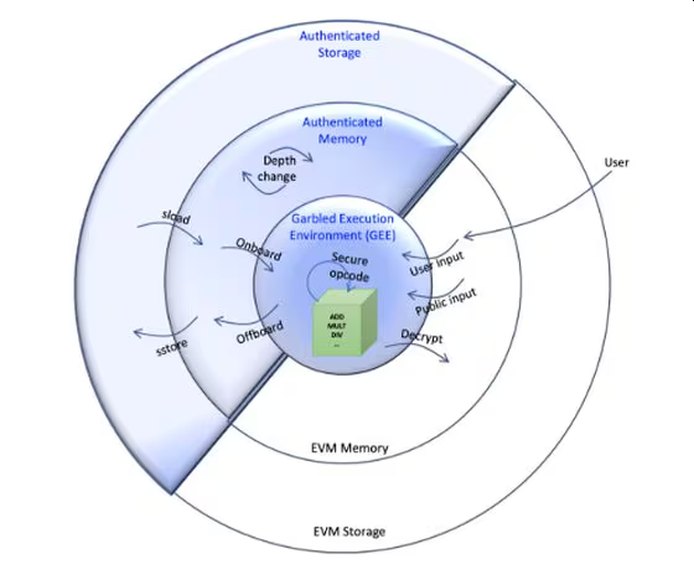Garbled circuits are a privacy-preserving cryptographic technique that was originally theorized as a solution to the hypothetical Millionaire’s Problem, where two millionaires want to see who has the higher net worth – but without actually revealing the dollar amount to the other party.
Indeed, garbled circuits are the latest in a long line of cryptographic innovations, and there’s reason to believe they may be faster, more efficient, and more reliable than Zero-Knowledge proofs (ZKPs), which were created to perform a similar function.
So what exactly are garbled circuits, how do they work, and why is this cutting-edge technology now making a splash in the crypto and blockchain space?
Introduction to Garbled Circuits
One of the main problems cryptographers have been trying to solve for years is how to prove the existence of something (say, an account balance or even an identity) without actually revealing the information contained in the proof.
This is particularly important for blockchain networks where there are no intermediaries to adjudicate on the 1-to-1 interactions that take place across chains, and every user wishes to retain as much autonomy and privacy as possible.
It’s very difficult to establish trust across an internet connection. Now, thanks to the development and launch of garbled circuits, we no longer have to.
Until now, garbled circuits were merely a theoretical computer model, and struggled to be realized for years due to their high resource requirements.
Garbled Circuits Go Live on the Blockchain
But thanks to recent breakthroughs made by cryptographers, the resources required to run garbled circuits have been greatly reduced, to the point where they can now run on blockchain networks.
The first-ever implementation of garbled circuits took place earlier this year when Web3 infrastructure development firm COTI demonstrated the technology’s effectiveness ahead of a full integration with its Ethereum-based Layer-2 network, COTI v2, which launched in April.
Garbled circuits on COTI v2 offer a significant performance advantage with computation speeds up to 1,000 times faster than Fully Homomorphic Encryption (FHE) systems. They also achieve latency that is up to 100 times lower than current alternatives, requiring up to 250 times less storage than FHE.
Moreover, garbled circuits can manage transactions that impact a private state shared among multiple parties, a capability that Zero-Knowledge (ZK)-based solutions lack.
Privacy is paramount in the blockchain space because it ensures the confidentiality of sensitive transactions and protects user identities. Without privacy, personal and financial information could be exposed to unauthorized parties, leading to risks like identity theft, fraud, and competitive disadvantages for businesses.
Moreover, privacy is vital for regulatory compliance with data protection laws such as GDPR and for enhancing security by reducing the risk of targeted attacks and data exploitation.

Source: COTI’s Whitepaper
Additionally, privacy fosters trust among users and allows for secure and confidential decentralized finance (DeFi) activities, preventing manipulative behaviors and protecting economic strategies.
Looking Ahead
An implementation of garbled circuits across the board in the blockchain space would enable all manner of trustless interactions between users of decentralized applications. For example, a system based on garbled circuits could allow decentralized lenders to establish someone’s suitability for a loan without that person ever having to expose their identity, their wallet address, or the actual value of their holdings.
Even age-restricted services could use garbled circuits to verify someone’s age, without said person ever having to expose their identity or date of birth.
Besides financial transactions or age verifications, garbled circuits could be used in any other system that benefits from privacy, such as election voting systems, healthcare data analysis, secure machine learning, digital contract signings – and so on.
With the technology now live on the COTI v2 network, expect to see more and more applications start to build around garbled circuits in the coming months and years. With major advantages over even cutting-edge solutions like ZK proofs, garbled circuits could, in time, completely elevate privacy standards in the realm of blockchain.
